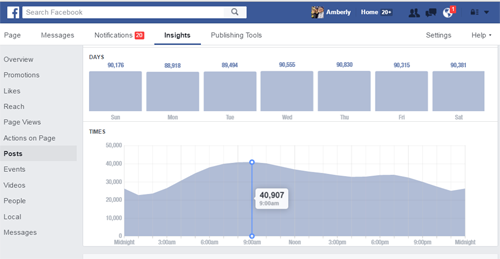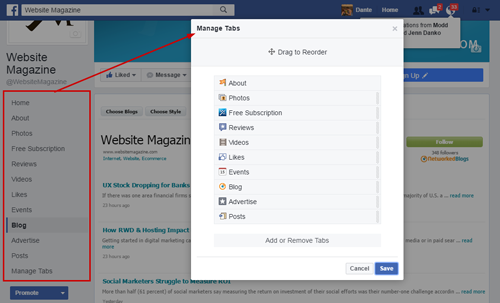News Feed Optimization Strategies for Better Organic Reach

Facebook has delivered another blow to brands looking to organically reach their social media followers on the network, further limiting reach to even people who have indicated their interest by "liking" a company's Page.
Last month, Facebook announced that "friends come first," ultimately ranking friends' posts higher than Pages. The social network took a somewhat unprecedented approach in that it directly stated this update may cause reach and referral traffic to decline for "some Pages" whereas with other updates, Facebook reacted to Page owners' anger after the fact. What is reach, and why is it important?
Organic reach is how many people see a company's posts without them paying to increase that exposure. For instance, a post may only reach two percent of a Page's total followers. Reach can be both from the people who have liked the Page as well as their network, which sees the posts as a result of them interacting with it (e.g., reacting or sharing). With already dismal organic reach (some report averages of 6.5 percent while others indicate it's closer to 2 percent), any updates decreasing that figure even more is, simply put, not good news. What's more, other networks tend to follow Facebook's lead when it comes to filtering business posts (especially Facebook-owned Instagram), so it's important to solidify a social strategy here because elements of it can be used elsewhere.
In a way, brands have to start thinking of social media optimization (SMO) or news feed optimization (NFO) in the same way they approach search engine optimization. Both search and social are vital parts of a consumer's day-to-day life and companies will want to do what they can in order to be top of mind on both channels. Not only does social media engagement bring traffic to a company's website (where conversions can happen), but it also known to impact search rankings and customer loyalty while increasing brand reach, so let's figure out how to get "ranked."
Include Images
By far one of the best tactics to improve engagement on social media is to include interesting and relevant images. On Facebook it's reported that posts with images receive 2.3 times more engagement than text-only posts. When including an image, marketers will want to make sure they follow copyright laws (seriously, don't pull it from Google), consider subscribing to a stock photo service, ask customers for photos or, even better, create unique images with the help of a designer or a free to low-cost service like Canva.
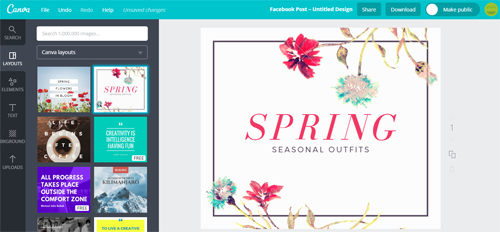
Consider Time and Day
While there are benchmarked best times to post on Facebook (HubSpot says 12-1 p.m. on Saturdays and Sundays, 3-4 p.m. on Wednesdays and 1-4 p.m. on Thursday and Fridays), brands will want to look at Facebook Insights to (1) see when their fans are most active and (2) evaluate how posts preform historically on certain days and times.
For instance, if a Page's followers are on Facebook the most at 9 a.m. on Tuesdays and those posts perform well (reach is high), then stick with 9 a.m. on Tuesdays but evaluate other days for other best times (this does require some cross-referencing of Insights like those from "Posts" and "Reach").
It's also important to consider where the majority of an audience lives so there is some individual guesswork to examine all the sources of information about "best times" and then understanding individual audiences and their behaviors due to location.
Advertise
Countless studies have been conducted that prove organic search rankings are influenced to some degree (even slightly) by a company's paid search efforts, meaning the two go hand in hand. While the evidence is a little shaky, there are some indicators that Facebook operates in a similar fashion.
Website Magazine noticed that when it pays to boost posts, organic reach starts to increase before the budget even starts to be "eaten into." This is in comparison to similar posts posted at the same optimal time for that particular day.
Even $5 a day could help to increase organic reach, and it's a no-lose situation because that budget is being allocated to an audience that is very targeted to the company's business as Facebook offers pretty advanced, yet easy-to-use targeting options.
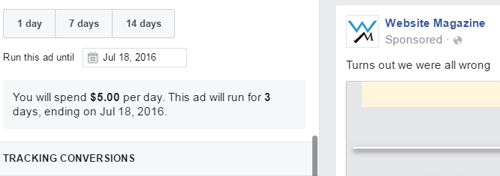
Go Live
When Google talks, people listen. The company has said it values "high-quality content" and considers "responsive Web design" to be the best choice for websites, so savvy businesses have started pumping out content and redesigning their sites using RWD. With Facebook being as influential as it is, the same should be true of it, and the company has been talking a lot about its Facebook Live feature.
The social network is prioritizing Live content in its algorithms and some Pages are even enjoying a 34 percent organic reach on the videos they are posting. This is likely due to not only the algo boost they receive but also that fans are notified when a Page "goes Live."
As a reminder, typical posts receive anywhere between 2-16 percent depending on the Page. To get started, check out this guide to going live on Facebook.

Respond to Customers (Fast)
As many know, Google takes issue with companies that don't offer a good user experience (UX) and that comes in many forms, from website bounce rates to reviews to incomplete Google+ profiles. With the similar UX priorities, brands would be wise to ensure their customers are being responded to on the network.
Facebook's emphasis on social customer service can easily be seen in its release of "badges" that reward Pages that have a response rate of 90 percent and a response time of 15 minutes within the last seven days. Not only that, but Facebook even offers Instant Replies, so brands can set up an automatic reply when someone messages them on their Page such as, "Thanks for contacting us! Our team is reviewing your inquiry and will respond within 12 hours."
Since customers expect near real-time responses on social media, 12 hours isn't ideal but at least expectations are being set.
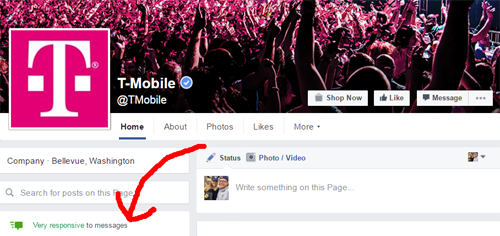
While it's not set in stone (or anywhere for that matter) that customer service on Facebook impacts organic reach, it's likely that a brand will (if they don't already) have some sort of quality score that impacts their ranking and how their posts will be delivered to their audience.
Be More Active
Brand mentions are happening more and more on social media networks (inside a brand's posts and outside) and brands would be smart to monitor those mentions with a social media management tool like Sprout Social, Hootsuite or Buffer (for Twitter and Instagram). By responding to public compliments or complaints, brands are investing in their social UX and there's no doubt that Facebook will reward that in some way as consumers consult social to search for products and services.

Get Ready for New Layout
Facebook is quietly testing a new Page layout as seen by a sample group (including Website Magazine's Online Marketing Director). The experimental layout gives prominence to a Page's "tabs." While this is very likely to not have much influence at all for posts per say, if Facebook continues making strives similar to Google (limiting organic reach and giving precedence to advertisements), then the social network will take into account the completeness of a company's business information especially in a layout that gives it more prominence.
Ask for Reviews
Once again, similar to Google, brands will want to encourage their social followers to include reviews on their Pages. Again, this may not have a direct impact on organic reach but Facebook algos may take into consideration how highly a brand is rated when deciding what percentage of fans should see their posts.

Create Share-Worthy Content
The way that Facebook phrased its news feed announcement very clearly indicates that "shares" are very valuable.
"The specific impact on your Page's distribution and other metrics may vary depending on the composition of your audience. For example, if a lot of your referral traffic is the result of people sharing your content and their friends liking and commenting on it, there will be less of an impact than if the majority of your traffic comes directly through Page posts."
Shares is mentioned multiple times throughout the entire announcement, so marketers should understand that "shares" might be the most important metric to track in this updated news feed. To increase shares, create content that is relevant to an audience, is timely and accounts for the kinds of topics that have been shared by a Page's audience in the past, which requires a little manual effort since "shares" are lumped into "engagement" in Facebook Insights.
![]()
Think About After the Click
With the majority of Facebook users accessing the network on their mobile devices, brands must ensure that when a person actually engages with a post and clicks through that the page is friendly to their device as well as relevant to what they had clicked through for.
Bounce rates could absolutely be taken into account in Facebook's evolving news feed algorithms. Similarly, brands will want to consider what their posts will actually look like on mobile devices. Facebook offers a mobile and desktop preview function for those scheduling their posts on the network directly (rather than through a third-party app).
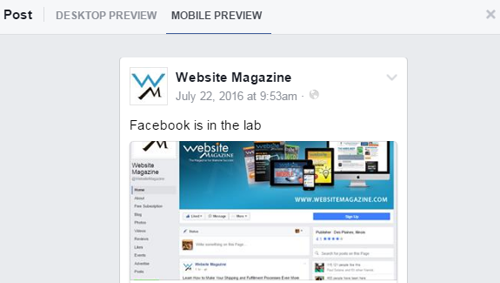
GET RANKED
Like SEO, social media optimization stands to get even more complicated but for both a focus on user experience and authenticity is key so continue growing your Pages and delivering great content.

Subscribe to Our Newsletter!
Latest in Marketing







